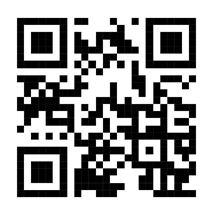Blood typing is of critical importance as it allows blood of the right type to be given to your patient. While DEA 1 negative blood can be given to any patient in an emergency, we encourage all practices to blood type patients prior to transfusion to allow DEA 1 positive blood to be used where possible. As the majority of the dog population is DEA 1 positive, blood typing helps us to better manage our stock levels and ensure DEA 1 negative blood is reserved for those dogs who really need it.
Canine blood typing with the Alvedia QuickTest
Pet Blood Bank supplies the Alvedia QuickTest for canine blood typing. This is an in-house kit that is very straightforward to use and gives a result within five minutes. The video below explains how to use the kit to blood type your patient. You can also download a guide on how to blood type using the QuickTest at the bottom of this page.
Record your results with the Alvedia mobile app
The Alvedia app allows you to scan and record the results of your blood typing tests. The compatibility feature advises which blood type would be appropriate for treating your patient and you can troubleshoot any issues that might have occurred with the test. The app can send you a copy of the result by email, and you can contact Alvedia directly if you need further support. In order to reduce environmental impact, paper blood typing result cards have also been replaced by the app.
Scan the QR code to access the app or visit the Alvedia website for more information.

Weak positive results
Over the years, Alvedia test kits have become more sensitive and will detect the DEA 1 antigen even when present at a low level. In these cases, due to DEA 1 being present, the administration of DEA 1 positive red cells is safe. We always recommend that DEA 1 negative recipients receive DEA 1 negative red cells to prevent sensitisation which may occur if DEA 1 positive red cells are given.
Canine blood typing history
Historically, DEA 1 was considered to have three subgroups and the terminology DEA 1.1, 1.2 and 1.3 was used. With the development of monoclonal antibody and immunofluorescence testing, it has been found that DEA 1.2 and 1.3 are actually red cell populations with a lower density of the DEA 1 antigen on their surface. Testing allows for detection of low level DEA 1 which means an individual canine patient is now only either DEA 1 positive or negative (Acierno et al, 2014).


